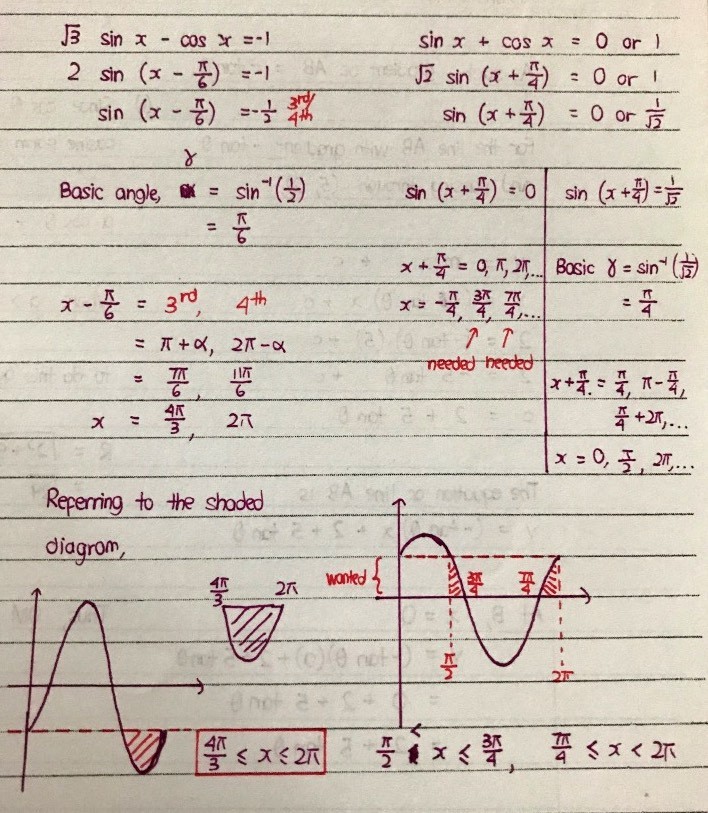Eric Nicholas K's answer to genevieve's Secondary 4 A Maths Singapore question.
done
{{ upvoteCount }} Upvotes
clear
{{ downvoteCount * -1 }} Downvotes
Good evening Cheryl! I know this question is tough and I expect you to have some questions regarding this, let me know if you need more explanation.
Basically, in linear inequalities like say, x - 2 > 0, we can say that the set of solutions is x > 2, because a straight line never changes its direction of travel. Once it crosses the x-axis at x = 2, it will never ever return to the x-axis again, so we are certain that x > 2.
However, in quadratic inequalities, we cannot say that if (x + 2) (x - 2) > 0, we cannot break this up into two inequalities x + 2 > 0 and x - 2 > 0, because the behaviour of quadratic graphs is not the same as the behaviour of a straight line graph. For a quadratic smiley face graph we know that the graph will start up high at first, goes down to cross the x-axis and reach a minimum below the x-axis and then turns back up. As such, by inspection of the graph sketch, we can conclude that x + 2 < 0 or x - 2 > 0, because that is how a quadratic graph works.
For a similar reason to the quadratic case, we sketch out the sine graph to see where the appropriate region of shading should be. This facilitates correct representation of our required inequalities. Here, for part c, it’s 4pi/3 <= x <= 2 pi because in this section of the graph, the graph will be on or below the line y = -1. For part d, it’s a similar idea and in fact there are two separate regions to describe.
Basically, in linear inequalities like say, x - 2 > 0, we can say that the set of solutions is x > 2, because a straight line never changes its direction of travel. Once it crosses the x-axis at x = 2, it will never ever return to the x-axis again, so we are certain that x > 2.
However, in quadratic inequalities, we cannot say that if (x + 2) (x - 2) > 0, we cannot break this up into two inequalities x + 2 > 0 and x - 2 > 0, because the behaviour of quadratic graphs is not the same as the behaviour of a straight line graph. For a quadratic smiley face graph we know that the graph will start up high at first, goes down to cross the x-axis and reach a minimum below the x-axis and then turns back up. As such, by inspection of the graph sketch, we can conclude that x + 2 < 0 or x - 2 > 0, because that is how a quadratic graph works.
For a similar reason to the quadratic case, we sketch out the sine graph to see where the appropriate region of shading should be. This facilitates correct representation of our required inequalities. Here, for part c, it’s 4pi/3 <= x <= 2 pi because in this section of the graph, the graph will be on or below the line y = -1. For part d, it’s a similar idea and in fact there are two separate regions to describe.
Date Posted:
4 years ago


